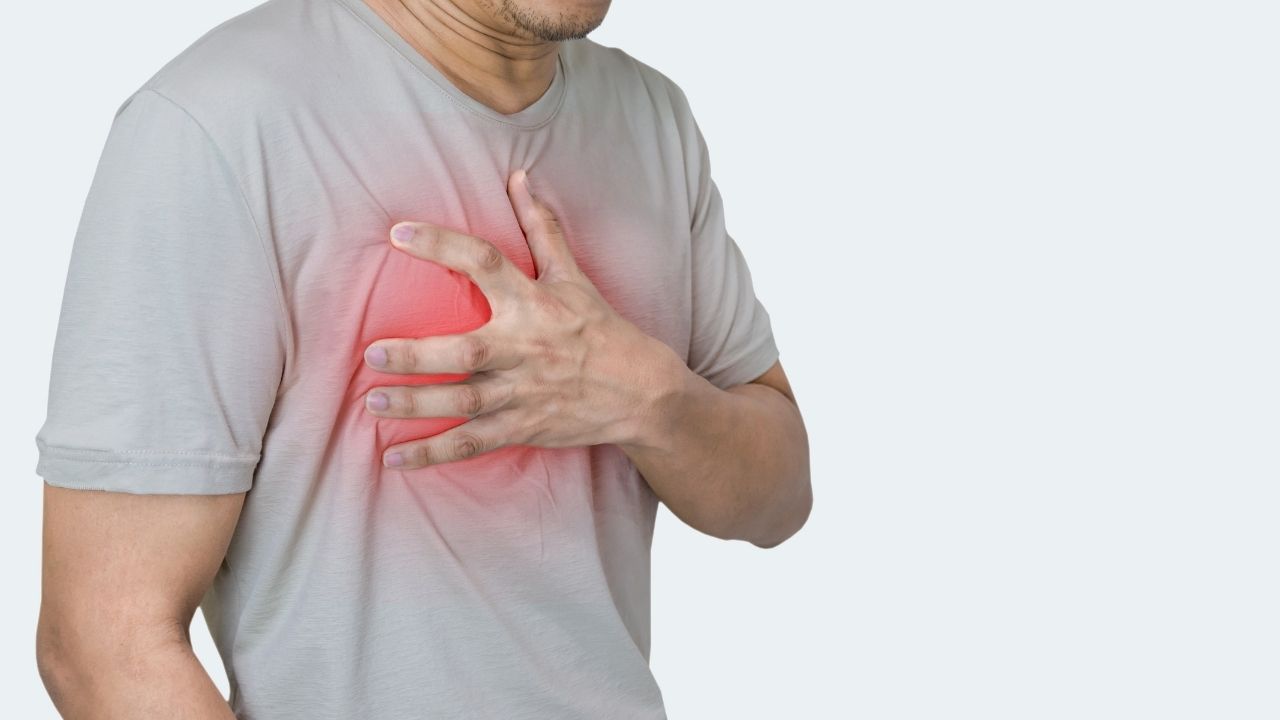A heart attack is a medical emergency. A heart attack occurs when the blood flow that carries oxygen to the heart is blocked. The heart muscle becomes hungry for oxygen and begins to die. Symptoms of heart attack vary from person to person.
Symptoms
1. Chest pain
2. Shortness of breath
3. Numbness, aching or tingling in the arm
4. Cold sweat.
5. Lightheadedness, weakness, or fatigue
6. Nausea, vomiting
7. Indigestion
First aid for heart attack
1. Have the person sit down, rest, and try to keep calm.
2. Loosen any tight clothing.
3. If the person is unconscious and unresponsive, call the local emergency number, and begin CPR.
4. CPR (Cardiopulmonary Resuscitation) - Position hands one on top of the other in the middle of the chest. Push hard, push fast - Use your body weight to help administer compressions at least 2 inches deep and deliver at a rate of at least 100 compressions per minute. Allow the chest to return to its normal position after each compression.
5. Rescue breath - With the person's head tilted back slightly and the chin lifted, pinch the nose shut and place your mouth over the person's mouth to make a complete seal. Blow into the person's mouth to make the chest rise. Allow air to exit before giving the next breath.
6. If the 1st breath does not cause the chest to rise, tilt the head and ensure a proper seal before giving the 2nd breath If the 2nd breath does not make the chest rise, the person may be choking. Look for an object and, if seen, remove it.
7. Continue giving sets of 30 chest compressions and 2 breaths until the person exhibits breathing or an AED becomes available. Do not give the person anything by mouth.
Heart attack prevention tips
1. Quit smoking, limit alcohol - It will reduce the risk of heart diseases.
2. Keep blood pressure, cholesterol, and diabetes under control.
3. Keep your weight in check. Regular exercise is essential to boost heart health.
4. Heart-friendly diet – Limit saturated fats, fresh fruits, and vegetables, whole grains.
Disclaimer: The content on this site is for informational purposes only, and should not be taken as professional medical advice. Always seek the guidance of your doctor or other health professionals for any questions you may have regarding your health or a medical condition.

 Learn these first aid procedures for heart attack. You may become a real-life hero and save someone’s life by implicating these tips as awareness is the first step towards preventive care.
Learn these first aid procedures for heart attack. You may become a real-life hero and save someone’s life by implicating these tips as awareness is the first step towards preventive care.










.jpeg)

.jpeg)

.jpeg)


.jpeg)



.jpeg)
.jpeg)
.jpeg)


.jpg)


.jpeg)
.jpeg)
